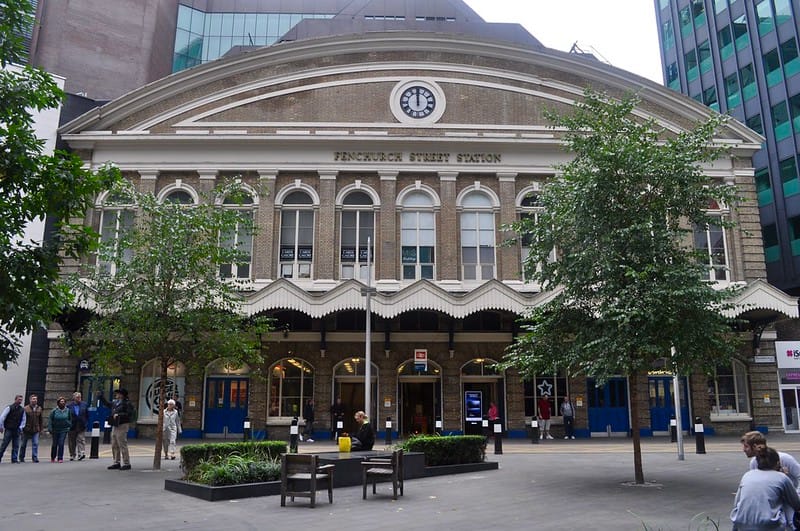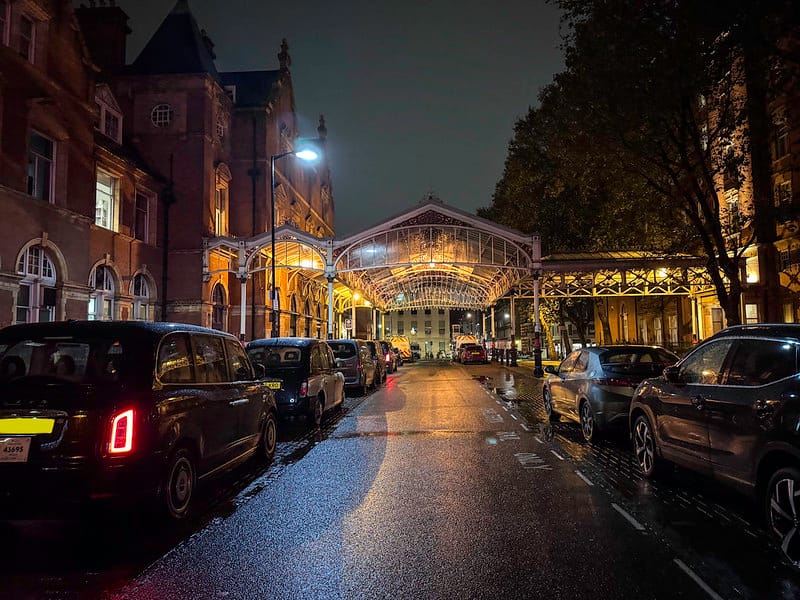West Brompton Station is a London Underground, London Overground and National Rail station in the Royal Borough of Kensington and Chelsea.
It has historical railway connections dating back to 1838 with the opening of the West London Extension Joint Railway.
The area boasts a fabulous array of independent restaurants, shops and pop-ups. Take in a Chelsea FC fixture at Stamford Bridge, or pay your respects at the nearby Brompton Cemetery.
Access
West Brompton Station lies on Old Brompton Road, south of the demolished Earls Court Exhibition Centre and west of the nearby Brompton Cemetery. It is a London Underground, London Overground and National Rail station.
On the Underground side it is on the Wimbledon branch of the District Line between Earls Court and Fulham Broadway stations. The station was officially opened by Glenda Jackson on 1 June 1999, although services started two days earlier. The station is in Travel Zone 2. There is step free access between platforms through the lifts to Platform 2 for eastbound District Line services and to platforms 3 and 4 for London Overground services.
The station has an attractive exterior, reminiscent of 19th c. railway architecture with arced window frames and soft yellow brickwork. The design was influenced by the architects Robinson Kenning and Gallagher of Croydon. Behind the lift tower on the Kensington-bound platform is a sylvan setting with a pond on the site of former sidings, themselves built on the original Kensington Canal. The pond is bordered by a small nature reserve and the original railway bridge; it is not uncommon to see foxes trotting across the track at dusk.
West Brompton is a predominantly residential area, popular with families and older couples looking for a quiet life within easy reach of central London. It has excellent schools and is close to trendy neighbouring districts. For entertainment, there is the popular Finborough Theatre and the renowned Brompton Cemetery, where Beatrix Potter used to walk her dogs and take inspiration for many of her animal characters. The famous bohemian music venue, The Troubadour, is also just a short stroll away.
Station facilities
West Brompton has a lot going for it: a charmingly old-fashioned village vibe, great schools, and trendy neighbouring areas. It’s a peaceful place to live and most residents are older families or young couples looking for a quiet life. The quaint streets are lined with pleasing Victorian stucco terraces and hidden mews houses.
Located on the West London Line (WLL), the station is immediately south of the demolished Earl’s Court Exhibition Centre and west of Brompton Cemetery in the Royal Borough of Kensington and Chelsea. The WLL platforms are a little off the main station building, but there is step free access via lifts between them and Platforms 2 and 3.
There’s plenty to see and do around here: tour Stamford Bridge, home of Chelsea Football Club; pay your respects at Brompton Cemetery, a true wonder (even though it sounds morbid); or catch a show at the award-winning Finborough Theatre. And there are so many independent restaurants, bars and pop-ups to enjoy, including the teeny tiny coffee shop Over Under.
The Troubadour, which has played host to Jimi Hendrix, Joni Mitchell and Bob Dylan in the past, is also a must-visit for music fans. This cosy and intimate venue is the heart of the local community, a hub for musicians and a true London landmark. Then there’s the Lillie Road Market, a wonderful collection of independent boutiques and artisanal food producers, which is a real delight.
Station history
The station is served by London Underground’s District line and by National Rail services operated by Southern and London Overground. It is located on Old Brompton Road near the West London Line (WLL) line and west of Brompton Cemetery in the Royal Borough of Kensington and Chelsea.
The WLR was opened in the early 1860s and connected the southern end of the Metropolitan District Railway at Kensington and Shepherd’s Bush to the west of Clapham Junction station. The line ran through West Brompton with a new station opening on 1st September 1866. The original station was known as Brompton and Richmond Road but the name later changed to West Brompton. The station was also served by a spur from the Hammersmith & City line at Latimer Road. The spur was built into the west side of the station and the station became a terminus for trains from the north of the country. A connection into the District Railway’s Lillie Bridge railway and goods depot was also built into the station.
Today, the station is used for local and long distance journeys. Local services are operated by London Overground between Willesden Junction and Clapham Junction. Until 2008 it was also the terminus of hourly Southern Railway trains to Milton Keynes Central and East Croydon. The station is on the boundary of the London boroughs of West Brompton and Fulham so there are plenty of other transport options available nearby.
Getting to the station
The best way to get to West Brompton station is by bus. Click on the bus route to see step by step directions with maps, line arrival times and updated time schedules.
West Brompton station is a London Underground and London Overground station in the Royal Borough of Kensington and Chelsea. It is located on Old Brompton Road to the south of the demolished Earls Court Exhibition Centre and west of Brompton Cemetery. The station serves both the District and the West London Line (WLL). The WLL platforms are separated from the Underground platform by a fence, but there are lifts to each and it is possible to walk between them.
On a typical weekday there are 39 scheduled rail journeys between West Brompton and Bath Spa, with the fastest journey taking 2hrs 13 mins. Services are operated by London Overground, Southern, and South Western Railway.
A short stroll from the station you’ll find the historic Brompton Cemetery, which is a fascinating wonder – not least because over 200,000 people lay at peace here. The ivy-clad Victorian memorials range from modest to extravagant and the cemetery is home to a cafe, an information centre and friendly volunteers. The site also hosts an annual flower festival and is open to the public all year round. It’s a place to visit for anyone interested in history, art or simply a quiet walk through some of the most magnificent monuments in London.




